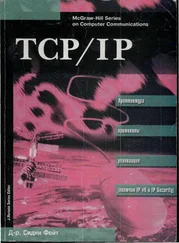As for art form, one of the most disturbing security books ever published is Kevin Mitnick's ‘Art of Deception’ . Mitnick, who was arrested and convicted for breaking into US phone systems, related after his release from prison how almost all of his exploits had involved social engineering. His typical hack was to pretend to a phone company employee that he was a colleague, and solicit ‘help’ such as a password. Ways of getting past a company's switchboard and winning its people's trust are a staple of sales-training courses, and hackers apply these directly. A harassed system administrator is called once or twice on trivial matters by someone claiming to be the CEO's personal assistant; once this idea has been accepted, the caller demands a new password for the boss. Mitnick became an expert at using such tricks to defeat company security procedures, and his book recounts a fascinating range of exploits [1327].
Social engineering became world headline news in September 2006 when it emerged that Hewlett-Packard chairwoman Patricia Dunn had hired private investigators who used pretexting to obtain the phone records of other board members of whom she was suspicious, and of journalists she considered hostile. She was forced to resign. The detectives were convicted of fraudulent wire communications and sentenced to do community service [139]. In the same year, the UK privacy authorities prosecuted a private detective agency that did pretexting jobs for top law firms [1140].
Amid growing publicity about social engineering, there was an audit of the IRS in 2007 by the Treasury Inspector General for Tax Administration, whose staff called 102 IRS employees at all levels, asked for their user IDs, and told them to change their passwords to a known value; 62 did so. What's worse, this happened despite similar audit tests in 2001 and 2004 [1676]. Since then, a number of audit firms have offered social engineering as a service; they phish their audit clients to show how easy it is. Since the mid-2010s, opinion has shifted against this practice, as it causes a lot of distress to staff without changing behaviour very much.
Social engineering isn't limited to stealing private information. It can also be about getting people to believe bogus public information. The quote from Bruce Schneier at the head of this chapter appeared in a report of a stock scam, where a bogus press release said that a company's CEO had resigned and its earnings would be restated. Several wire services passed this on, and the stock dropped 61% until the hoax was exposed [1673]. Fake news of this kind has been around forever, but the Internet has made it easier to promote and social media seem to be making it ubiquitous. We'll revisit this issue when I discuss censorship in section 26.4.
While phone-based social engineering was the favoured tactic of the 20th century, online phishing seems to have replaced it as the main tactic of the 21st. The operators include both criminals and intelligence agencies, while the targets are both your staff and your customers. It is difficult enough to train your staff; training the average customer is even harder. They'll assume you're trying to hustle them, ignore your warnings and just figure out the easiest way to get what they want from your system. And you can't design simply for the average. If your systems are not safe to use by people who don't speak English well, or who are dyslexic, or who have learning difficulties, you are asking for serious legal trouble. So the easiest way to use your system had better be the safest.
The word ‘phishing’ appeared in 1996 in the context of the theft of AOL passwords. By then, attempts to crack email accounts to send spam had become common enough for AOL to have a ‘report password solicitation’ button on its web page; and the first reference to ‘password fishing’ is in 1990, in the context of people altering terminal firmware to collect Unix logon passwords [445]. Also in 1996, Tony Greening reported a systematic experimental study: 336 computer science students at the University of Sydney were sent an email message asking them to supply their password on the pretext that it was required to ‘validate’ the password database after a suspected break-in. 138 of them returned a valid password. Some were suspicious: 30 returned a plausible looking but invalid password, while over 200 changed their passwords without official prompting. But very few of them reported the email to authority [813].
Phishing attacks against banks started seven years later in 2003, with half-a-dozen attempts reported [443]. The early attacks imitated bank websites, but were both crude and greedy; the attackers asked for all sorts of information such as ATM PINs, and their emails were also written in poor English. Most customers smelt a rat. By about 2008, the attackers learned to use better psychology; they often reused genuine bank emails, with just the URLs changed, or sent an email saying something like ‘Thank you for adding a new email address to your PayPal account’ to provoke the customer to log on to complain that they hadn't. Of course, customers who used the provided link rather than typing in www.paypal.comor using an existing bookmark would get their accounts emptied. By then phishing was being used by state actors too; I described in section 2.2.2how Chinese intelligence compromised the Dalai Lama's private office during the 2008 Olympic games. They used crimeware tools that were originally used by Russian fraud gangs, which they seemed to think gave them some deniability afterwards.
Fraud losses grew rapidly but stabilised by about 2015. A number of countermeasures helped bring things under control, including more complex logon schemes (using two-factor authentication, or its low-cost cousin, the request for some random letters of your password); a move to webmail systems that filter spam better; and back-end fraud engines that look for cashout patterns. The competitive landscape was rough, in that the phishermen would hit the easiest targets at any time in each country, both in terms of stealing their customer credentials and using their accounts to launder stolen funds. Concentrated losses caused the targets to wake up and take action. Since then, we've seen large-scale attacks on non-financial firms like Amazon; in the late 2000s, the crook would change your email and street address, then use your credit card to order a wide-screen TV. Since about 2016, the action has been in gift vouchers.
As we noted in the last chapter, phishing is also used at scale by botmasters to recruit new machines to their botnets, and in targeted ways both by crooks aiming at specific people or firms, and by intelligence agencies. There's a big difference between attacks conducted at scale, where the economics dictate that the cost of recruiting a new machine to a botnet can be at most a few cents, and targeted attacks, where spies can spend years trying to hack the phone of a rival head of government, or a fraudster can spend weeks or months of effort stalking a chief financial officer in the hope of a large payout. The lures and techniques used are different, even if the crimeware installed on the target's laptop or phone comes from the same stable. Cormac Herley argues that this gulf between the economics of targeted crime and volume crime is one of the reasons why cybercrime isn't much worse than it is [889]. After all, given that we depend on computers, and that all computers are insecure, and that there are attacks all the time, how come civilisation hasn't collapsed? Cybercrime can't always be as easy as it looks.
Another factor is that it takes time for innovations to be developed and disseminated. We noted that it took seven years for the bad guys to catch up with Tony Greening's 1995 phishing work. As another example, a 2007 paper by Tom Jagatic and colleagues showed how to make phishing much more effective by automatically personalising each phish using context mined from the target's social network [973]. I cited that in the second edition of this book, and in 2016 we saw it in the wild: a gang sent hundreds of thousands of phish with US and Australian banking Trojans to individuals working in finance departments of companies, with their names and job titles apparently scraped from LinkedIn [1299]. This seems to have been crude and hasn't really caught on, but once the bad guys figure it out we may see spear-phishing at scale in the future, and it's interesting to think of how we might respond. The other personalised bulk scams we see are blackmail attempts where the victims get email claiming that their personal information has been compromised and including a password or the last four digits of a credit card number as evidence, but the yield from such scams seems to be low.
Читать дальше











